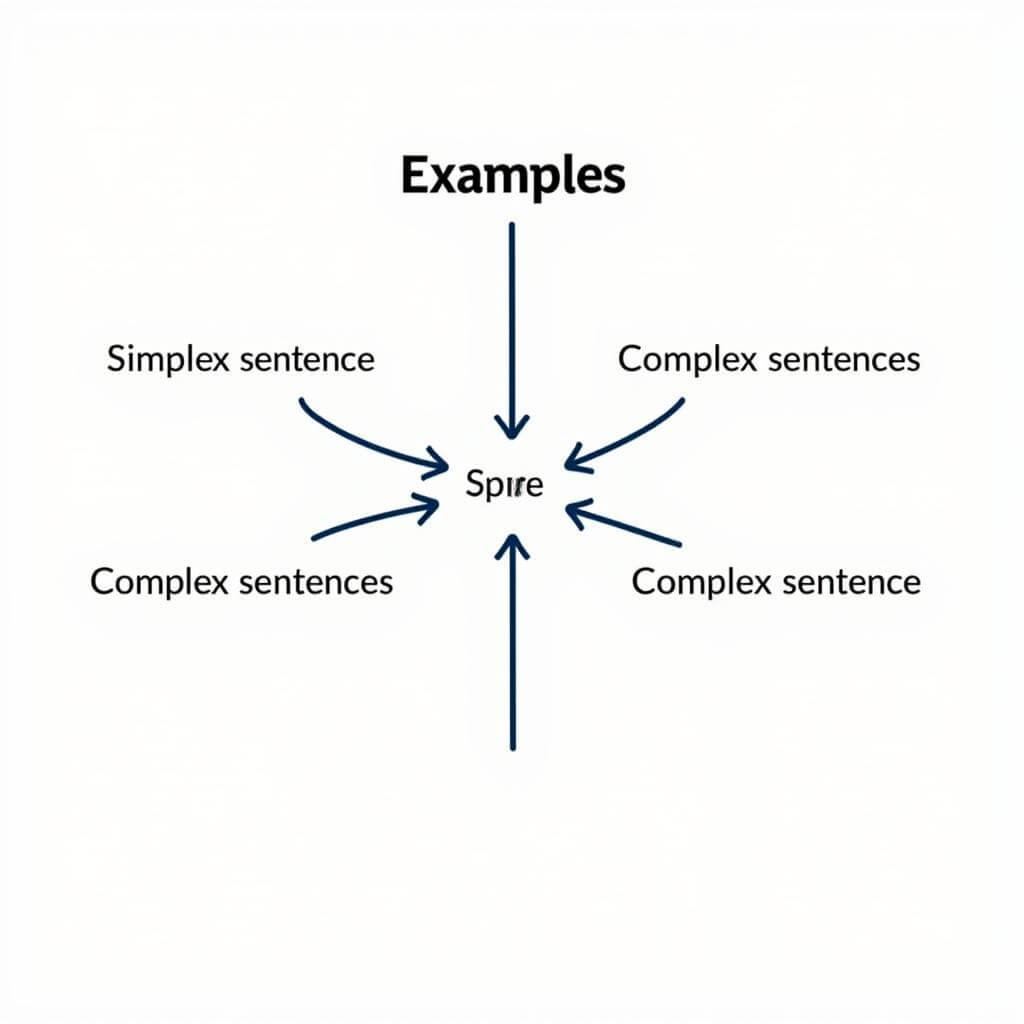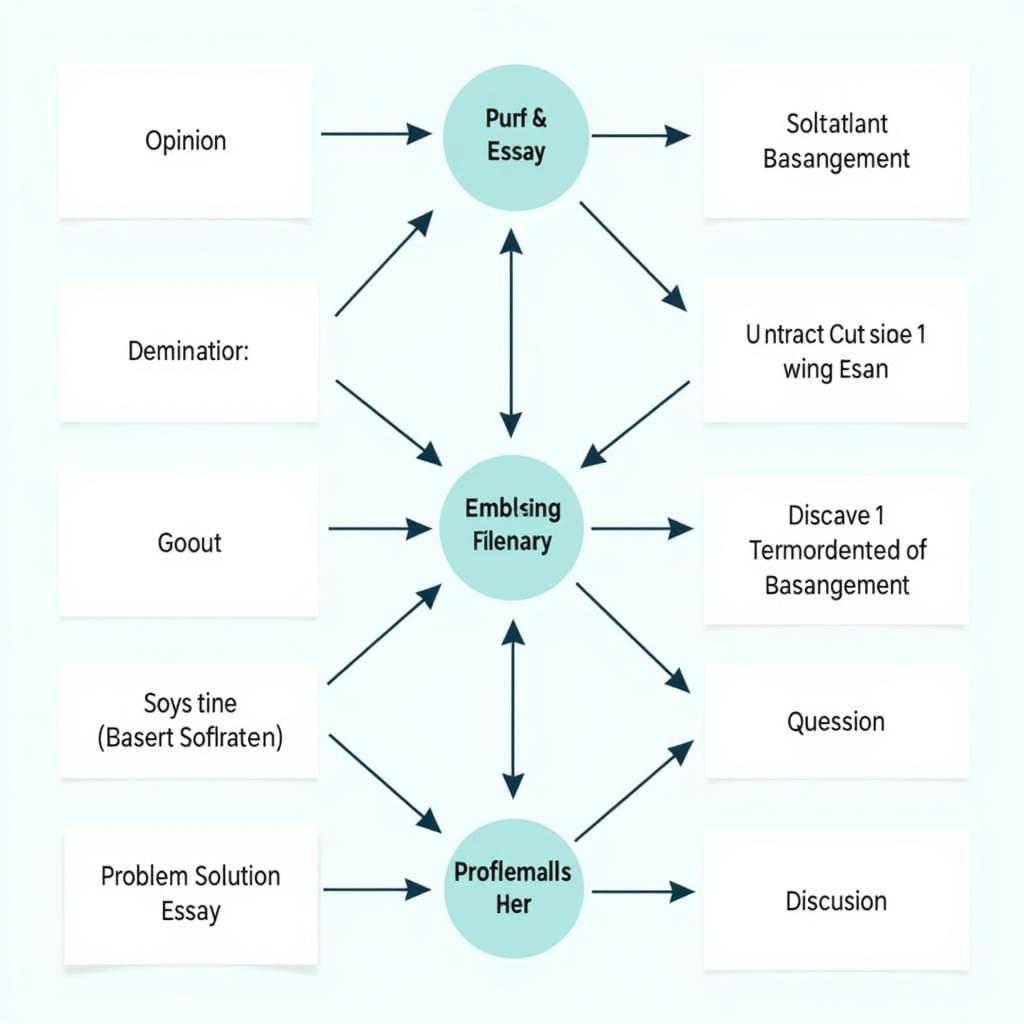Writing fluently in IELTS Task 2 is crucial for achieving a high band score. This skill demonstrates your ability to express ideas coherently and effectively in English. Let’s explore proven techniques to improve your sentence fluency and elevate your IELTS Writing performance.
Understanding Sentence Fluency in IELTS Writing
Sentence fluency refers to the smooth flow of language in your essay. It’s about how well your sentences connect and how naturally they read. In IELTS Writing Task 2, examiners look for varied sentence structures, coherent paragraphs, and a logical progression of ideas.
Why Sentence Fluency Matters
Fluent writing not only makes your essay more enjoyable to read but also:
- Enhances clarity of your arguments
- Demonstrates advanced language proficiency
- Improves overall coherence and cohesion
- Helps you express complex ideas more effectively
Dr. Emma Thompson, a renowned IELTS expert, emphasizes: “Mastering sentence fluency is like composing music with words. It’s the rhythm that carries your ideas smoothly from one point to the next.”
Key Strategies for Improving Sentence Fluency
1. Vary Your Sentence Structure
Using a mix of simple, compound, and complex sentences adds rhythm to your writing and keeps the reader engaged.
- Simple: The government should invest in education.
- Compound: The government should invest in education, and it should also focus on healthcare.
- Complex: While the government should invest in education, it’s equally important to address healthcare needs.
 Varied sentence structures in IELTS Writing
Varied sentence structures in IELTS Writing
2. Use Transitional Phrases
Transitional phrases act as bridges between sentences and paragraphs, ensuring smooth flow of ideas.
Examples:
- Furthermore
- On the other hand
- In contrast
- As a result
- Nevertheless
3. Employ Cohesive Devices
Cohesive devices help link ideas within and between sentences:
- Pronouns: it, they, this, these
- Synonyms and related words
- Repetition of key terms
4. Practice Sentence Combining
Take two or more simple sentences and combine them into a more complex one. This technique improves your ability to express relationships between ideas.
Example:
- Simple: Technology is advancing rapidly. It is changing our lives.
- Combined: As technology advances rapidly, it is profoundly changing our lives.
5. Read Extensively
Reading high-quality English texts exposes you to various sentence structures and writing styles. This exposure naturally improves your own writing fluency.
“Regular reading in English is like a secret weapon for IELTS candidates,” says Professor James Lee, IELTS Writing researcher. “It subconsciously trains your brain to recognize and reproduce fluent sentence patterns.”
 Reading to improve writing fluency
Reading to improve writing fluency
6. Use Academic Vocabulary Appropriately
Incorporating academic vocabulary enhances the sophistication of your writing. However, ensure you use these words correctly and in context.
Example:
Instead of: “This is a big problem.”
Write: “This issue has significant implications for society.”
7. Practice Self-Editing
After writing your essay, take time to review and refine your sentences. Look for opportunities to:
- Combine short, choppy sentences
- Break up overly long sentences
- Replace repetitive words with synonyms
- Ensure logical connections between ideas
How to manage difficult topics in IELTS writing task 2 can be challenging, but with practice, you’ll develop the skills to tackle even the most complex subjects fluently.
Common Pitfalls to Avoid
- Overusing simple sentences
- Relying too heavily on one type of sentence structure
- Neglecting transitions between paragraphs
- Using overly complex vocabulary incorrectly
- Writing excessively long sentences that become unclear
Practical Exercises to Enhance Sentence Fluency
-
Sentence Expansion: Take a simple sentence and gradually expand it by adding descriptive phrases and clauses.
-
Paragraph Rewriting: Rewrite a paragraph from a news article or academic text, focusing on improving sentence fluency.
-
Transitional Phrase Practice: Write a series of sentences, then challenge yourself to connect them using different transitional phrases.
-
Timed Writing: Practice writing Task 2 essays within the 40-minute time limit, focusing on maintaining fluency under pressure.
-
Peer Review: Exchange essays with a study partner and provide feedback on each other’s sentence fluency.
Improving fluency through self-feedback is an effective way to continually refine your writing skills.
The Role of Grammar in Sentence Fluency
While fluency is about smooth expression, it’s underpinned by solid grammar. Improving sentence fluency with grammar involves mastering:
- Correct verb tenses
- Subject-verb agreement
- Proper use of articles and prepositions
- Consistent pronoun usage
Dr. Sarah Chen, IELTS Writing instructor, notes: “Grammar is the foundation upon which fluent writing is built. Without it, even the most creative ideas can be lost in translation.”
Adapting Fluency Techniques to Different Task 2 Question Types
Different IELTS Writing Task 2 questions (opinion, discussion, problem-solution, etc.) may require slight adjustments in your approach to fluency:
- Opinion Essays: Use clear topic sentences and strong transitional phrases to guide the reader through your argument.
- Discussion Essays: Employ contrasting language to smoothly transition between different viewpoints.
- Problem-Solution Essays: Use cause-effect language to link problems to solutions fluently.
 Fluency techniques for different IELTS Task 2 questions
Fluency techniques for different IELTS Task 2 questions
Conclusion
Improving sentence fluency in IELTS Writing Task 2 is a skill that develops with consistent practice and attention to detail. By implementing these strategies and avoiding common pitfalls, you’ll be well on your way to writing more fluent, coherent, and high-scoring essays. Remember, fluency is not just about writing smoothly; it’s about effectively communicating your ideas in a way that engages and convinces your reader.
Continue to practice regularly, seek feedback, and refine your skills. With dedication, you’ll see significant improvements in your writing fluency, leading to better IELTS scores and more confident English expression overall.
FAQ
How long does it typically take to improve sentence fluency?
Improvement in sentence fluency varies from person to person, but with consistent practice, most students see noticeable progress within 4-6 weeks of focused effort.
Can I use idioms to improve sentence fluency in IELTS Writing Task 2?
Yes, but use idioms sparingly and ensure they’re appropriate for academic writing. Overuse can make your essay sound informal.
How can I practice sentence fluency if I don’t have a study partner?
You can use online forums, language exchange apps, or AI writing assistants for feedback. Additionally, reading your essays aloud can help you identify areas for improvement.
Is it better to use simple or complex sentences for better fluency?
A mix of both is ideal. Simple sentences can provide clarity, while complex sentences show sophistication. The key is to vary your sentence structures throughout the essay.
How does sentence fluency affect my IELTS Writing score?
Sentence fluency directly impacts your scores in Coherence and Cohesion, as well as Lexical Resource. It can also influence your Task Achievement score by making your arguments clearer and more persuasive.
Improving comprehension with practice materials can also indirectly enhance your writing fluency by exposing you to well-structured academic texts.


